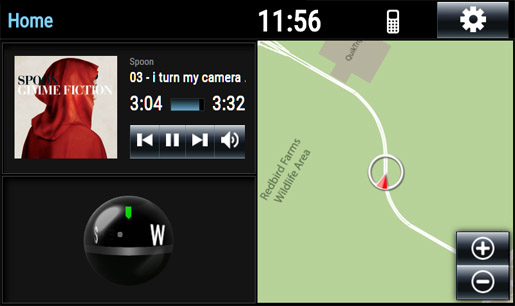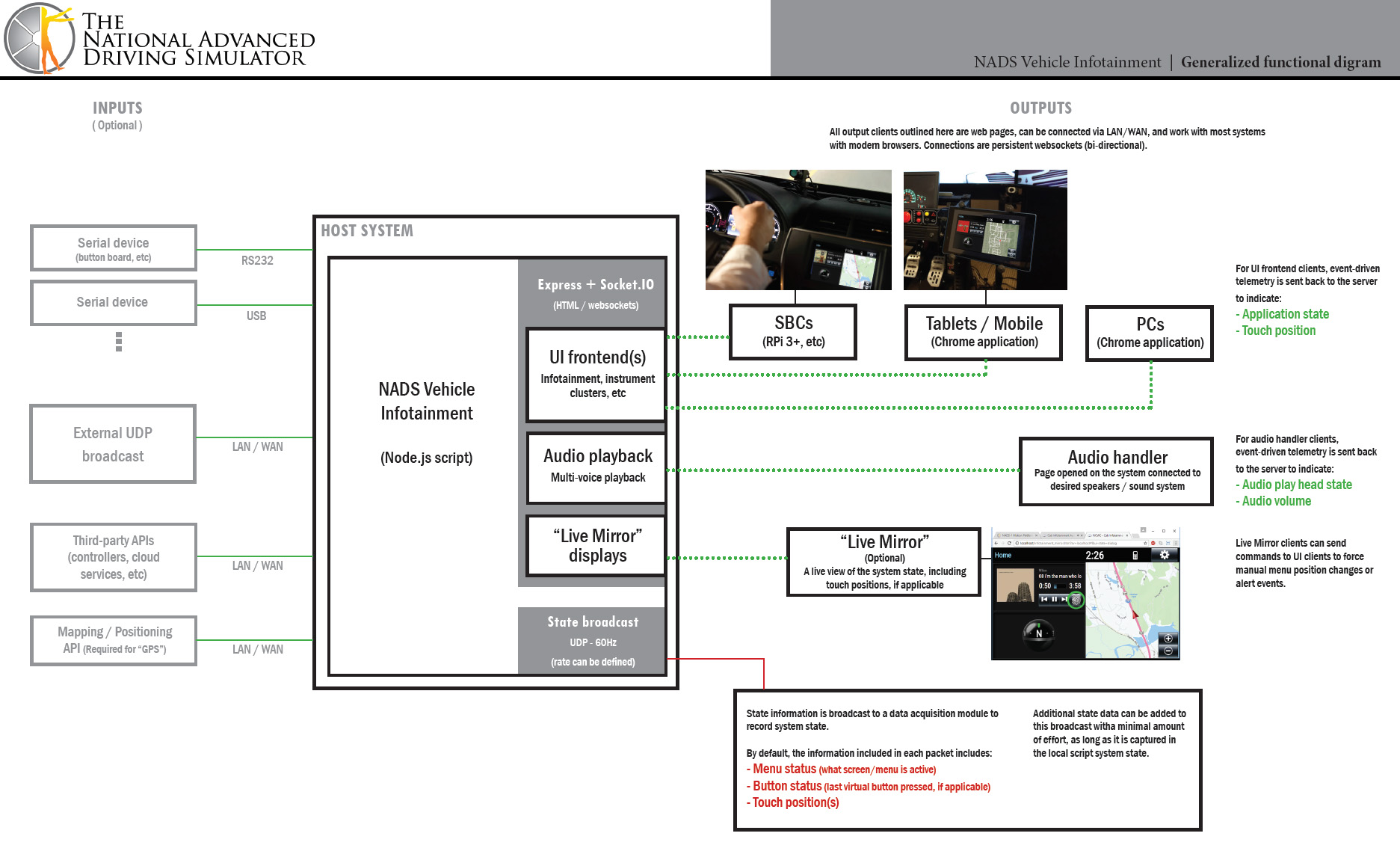Difference between revisions of "Infotainment System"
Steve Cable (Talk | contribs) (→Architecture) |
Steve Cable (Talk | contribs) |
||
| Line 26: | Line 26: | ||
<html> | <html> | ||
<div style="float:right; max-width:50%;"> | <div style="float:right; max-width:50%;"> | ||
| − | </ | + | <img src="../images/infotainment_genr_functional_diagram.jpg" style="margin-bottom:1em;" class="img-responsive"> |
| − | + | ||
| − | + | ||
</div> | </div> | ||
</html> | </html> | ||
Revision as of 21:44, 23 May 2019

Applications include infotainment systems and instrument panel displays. The standard system available with miniSim models a typical OEM infotainment system including the following functionality:
- Radio (requires internet connection)
- MP3 playback
- Navigation (NADS Springfield map only)
- Platform Independent (iOS, Android, Windows, Raspberry Pi)
Architecture

Host script
This is blah blah
Audio handler(s)
By default, a single audio page (infotainment_audio.htm) is included. This page can handle 3 channels of stereo playback:
- Media playback
- Alert playback (temporarily mutes media playback on play)
- Notify playback
Display/input pages
This is where it gets interesting.







